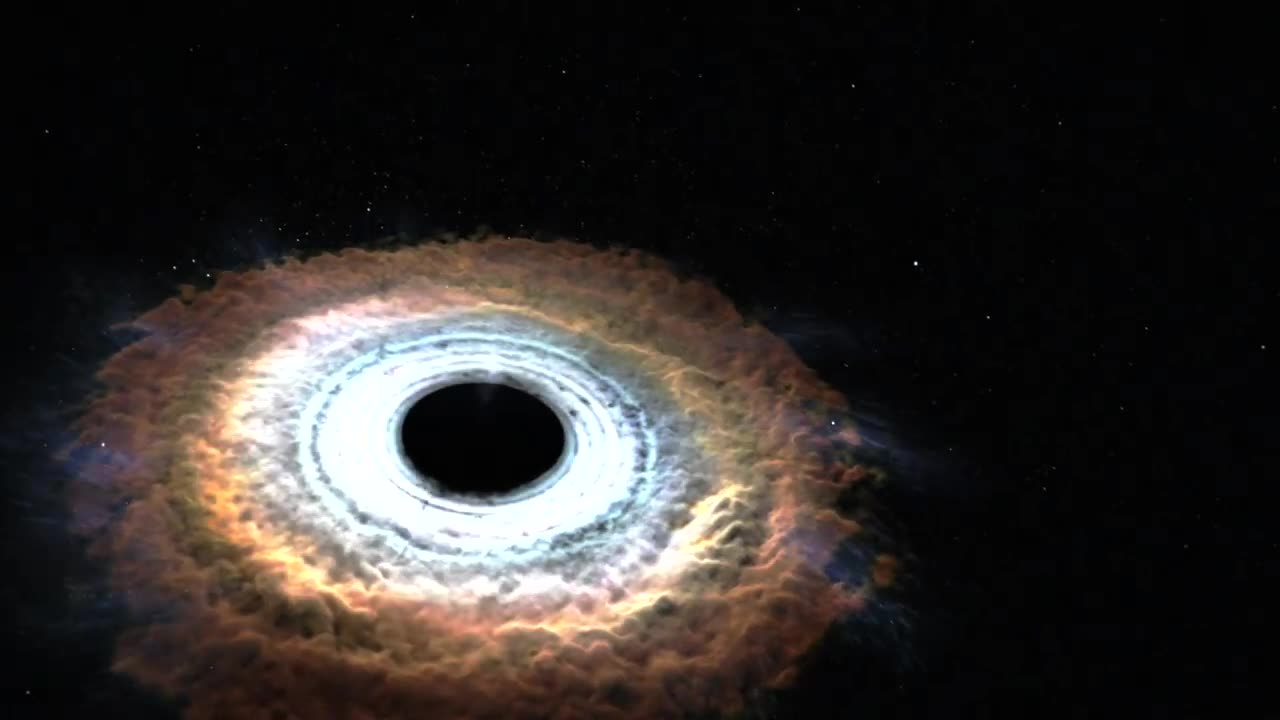Premium Only Content

NASA | Massive Black Hole Shreds Passing Stars
Heightened focus
NASA | Massive Black Hole Shreds Passing Star
6.2M views · 7 years ago...more
NASA Goddard
1.5M
Subscribe
17K
Share
Save
Report
Comments903
David John
You can tell it is fake because you cannot hear music in space.
Up next
9:04
The First and Only Photos From Venus - What Did We See? (4K)
V101 SPACE•2.9M views
1:33
Nasa footage shows how terrifyingly vast black holes are
The Independent•25K views
1:44
How big are supermassive black holes? NASA size comparison
VideoFromSpace•6.1K views
2:24
We Are NASA
NASA•3.4M views
0:31
Blender Black Hole Showcase
Dylan Friedman•17K views
5:29
First Image of a Black Hole!
Veritasium•9.8M views
0:41
Black Hole SpaceEngine
TheGalaxGame•4.7K views
3:11
Black Holes 101 | National Geographic
National Geographic•6.8M views
1:01:07
One Hour Of Mind-Blowing Mysteries Of The Atom | Full Documentary
Big Scientific Questions
New
12K views
0:51
Overview Animation of Gamma-ray Burst
NASA Video•109K views
1:44
NASA Animation Sizes Up the Biggest Black Holes
NASA Goddard•891K views
28:58
HOW IT WORKS: The International Space Station
DOCUMENTARY TUBE•107M views
Description
NASA | Massive Black Hole Shreds Passing Star
NASA Goddard
17K
Likes
6,241,902
Views
2015
Oct 21
This artist’s rendering illustrates new findings about a star shredded by a black hole. When a star wanders too close to a black hole, intense tidal forces rip the star apart. In these events, called “tidal disruptions,” some of the stellar debris is flung outward at high speed while the rest falls toward the black hole. This causes a distinct X-ray flare that can last for a few years. NASA’s Chandra X-ray Observatory, Swift Gamma-ray Burst Explorer, and ESA/NASA’s XMM-Newton collected different pieces of this astronomical puzzle in a tidal disruption event called ASASSN-14li, which was found in an optical search by the All-Sky Automated Survey for Supernovae (ASAS-SN) in November 2014. The event occurred near a supermassive black hole estimated to weigh a few million times the mass of the sun in the center of PGC 043234, a galaxy that lies about 290 million light-years away. Astronomers hope to find more events like ASASSN-14li to test theoretical models about how black holes affect their environments.
During the tidal disruption event, filaments containing much of the star's mass fall toward the black hole. Eventually these gaseous filaments merge into a smooth, hot disk glowing brightly in X-rays. As the disk forms, its central region heats up tremendously, which drives a flow of material, called a wind, away from the disk.
Music credit: Encompass by Mark Petrie from Killer Tracks.
This video is public domain and can be downloaded at: http://svs.gsfc.nasa.gov/goto?12005
You can read more about this at: http://www.nasa.gov/mission_pages/cha...
Like our videos? Subscribe to NASA's Goddard Shorts HD podcast:
http://svs.gsfc.nasa.gov/vis/iTunes/f...
Or find NASA Goddard Space Flight Center on Facebook:
http://www.facebook.com/NASA.GSFC
Or find us on Twitter:
http://twitter.com/NASAGoddard
...more
NASA Goddard
1.5M subscribers
Videos
About
Description
NASA | Massive Black Hole Shreds Passing Star
NASA Goddard
17K
Likes
6,241,902
Views
2015
Oct 21
This artist’s rendering illustrates new findings about a star shredded by a black hole. When a star wanders too close to a black hole, intense tidal forces rip the star apart. In these events, called “tidal disruptions,” some of the stellar debris is flung outward at high speed while the rest falls toward the black hole. This causes a distinct X-ray flare that can last for a few years. NASA’s Chandra X-ray Observatory, Swift Gamma-ray Burst Explorer, and ESA/NASA’s XMM-Newton collected different pieces of this astronomical puzzle in a tidal disruption event called ASASSN-14li, which was found in an optical search by the All-Sky Automated Survey for Supernovae (ASAS-SN) in November 2014. The event occurred near a supermassive black hole estimated to weigh a few million times the mass of the sun in the center of PGC 043234, a galaxy that lies about 290 million light-years away. Astronomers hope to find more events like ASASSN-14li to test theoretical models about how black holes affect their environments.
During the tidal disruption event, filaments containing much of the star's mass fall toward the black hole. Eventually these gaseous filaments merge into a smooth, hot disk glowing brightly in X-rays. As the disk forms, its central region heats up tremendously, which drives a flow of material, called a wind, away from the disk.
-
 1:09:42
1:09:42
Sean Unpaved
2 hours agoSports, Courts, & Contracts: Lia Thomas, Diddy's Verdict, & T.J. Watt's Worth
12.3K2 -
 9:02
9:02
MattMorseTV
21 hours ago $0.97 earnedThe CDC kept this HIDDEN for 25 YEARS.
9.04K11 -
 1:06:47
1:06:47
Timcast
3 hours agoTrump ACCUSED Of MASS EXECUTING Illegals By DUMPING Them In The Ocean
145K193 -
 2:01:34
2:01:34
Steven Crowder
5 hours agoAlligator Alcatraz is Destroying Leftist Brains Nationwide
357K178 -
 1:57:54
1:57:54
The Charlie Kirk Show
2 hours agoBBB-ack to the House + Zohran vs. Cuba | Rep. Roy, Halperin, Johnson | 7.2.25
53.1K16 -
 58:05
58:05
The Tom Renz Show
2 hours agoThe Diddy Circus, Will Fauci Go To Jail, and RFK's Claim of 1135% Tie To Autism
12.7K4 -
 5:54:10
5:54:10
Akademiks
6 hours agoVERDICT WATCH: Diddy Trial Day 35: VERDICT INCOMING TODAY!! GUILTY OR NOT GUILTY? 3/30
91.4K10 -
 2:20:28
2:20:28
Side Scrollers Podcast
3 hours agoLudwig/Mang0 COPE + Diddy Verdict + You Don’t Hate the Media Enough | Side Scrollers LIVE
16.3K1 -
 34:21
34:21
Neil McCoy-Ward
2 hours agoThe Housing Market Just FLIPPED... (US🇺🇸, UK🇬🇧 & Canada🇨🇦!)
8.02K4 -
 LIVE
LIVE
Viss
3 hours ago🔴LIVE - Winning While Teaching You PUBG Tactics!
67 watching